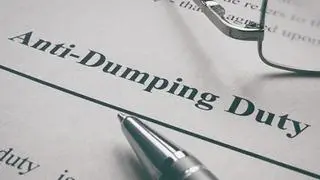India’s Mines Ministry is planning stringent regulatory measures, that include technology intervention, random sampling at mines, and RFID tagging of vehicles, among others, to stop misreporting or under-reporting of iron ore grades in the country.
Such misreporting in grades — a rampant practice in the mining industry — has resulted in losses to the exchequer to the tune of a few thousand crores of rupees. State governments have also been raising the issue with the Centre, following which an expert committee was formed.
The committee had the power to suggest punitive action and its report has been submitted recently, a senior Mines Ministry official told businessline.
Misreporting of lumps as fines or declaring the dispatches of higher-grade material in the lower-grade slab directly affects the revenue generation of the government. It also affects the royalty, District Mineral Foundation (DMF) and National Mineral Exploration Trust (NMET), auction premium, and other government levies.
According to the official, misreporting (of the grades) is more significant in the auction regime, where the lessee is required to pay the auction premium on the basis of the value of the mineral dispatched.
“Many of the auctioned iron ore mines fetched high auction premiums. Misreporting of higher-grade minerals as lower ones leads to the payment of lower auction premiums. A loss that runs into thousands of crores,” the official explained.
What the stats say
As per an analysis of the Ministry, a misreporting in iron ore grades — for example, an ore with 62 per cent — less than 65 per cent grade being misreported at 60-62 per cent lump iron ore leads to a reduction in the average selling price of ₹1,000 per tonne (from ₹6,500/tonne to ₹5,500/tonne).
Assuming, there is a bid premium of 100 per cent, the reduction in revenue to the State government would be ₹1,000 per tonne on account of auction premium, ₹150 per tonne on account of royalty, ₹15 per tonne on account of contribution to DMF, and ₹3 per tonne on account of contribution to NMET.
The existing legal provisions of the Mines and Minerals (Development and Regulation) Act of 1957 allows the State government to delegate the power to make rules for preventing illegal mining, transportation, and storage of minerals.
These rules can be further strengthened by adopting appropriate technology-driven measures, the official said.
Committee recommendations
Recommendations made by the committee, include the inclusion of IT enabled system with no or minimal human intervention (and it will cover mining of minerals, stacking, sampling, issuing of transportation challans, dispatch, and transportation of minerals up to the factory/port).
Automated mineral sampling and grade analysis have been suggested to reduce the chances of misclassification or misreporting of grades; an inbuilt random sampling process in the system; monthly on-the-spot sampling and analysis of grade of minerals; and videography of the sampling process should be mandatory, among others.
The committee has also recommended GPS-enabled vehicles coupled with RFID tagging and RFID-enabled weighbridges for verification of trips. Mine monitoring system by installing a live feed CCTV system at the stacks and weighbridges were suggested.
Suggestions have been specific to the size of mines too. The Ministry has also circulated the recommendations and sought suggestions from the State government, industry associations, mining companies, and other stakeholders.
In August 2022, a committee set up by the Union Ministry of Mines recommended steps for beneficiation and upgradation of low-grade iron ore into higher grade ones.








Comments
Comments have to be in English, and in full sentences. They cannot be abusive or personal. Please abide by our community guidelines for posting your comments.
We have migrated to a new commenting platform. If you are already a registered user of TheHindu Businessline and logged in, you may continue to engage with our articles. If you do not have an account please register and login to post comments. Users can access their older comments by logging into their accounts on Vuukle.